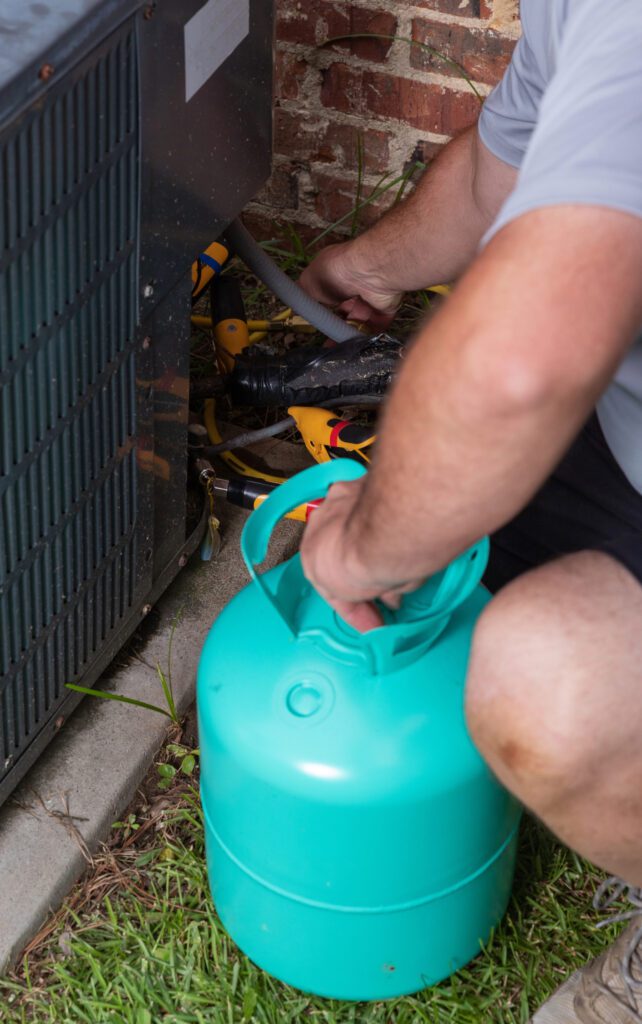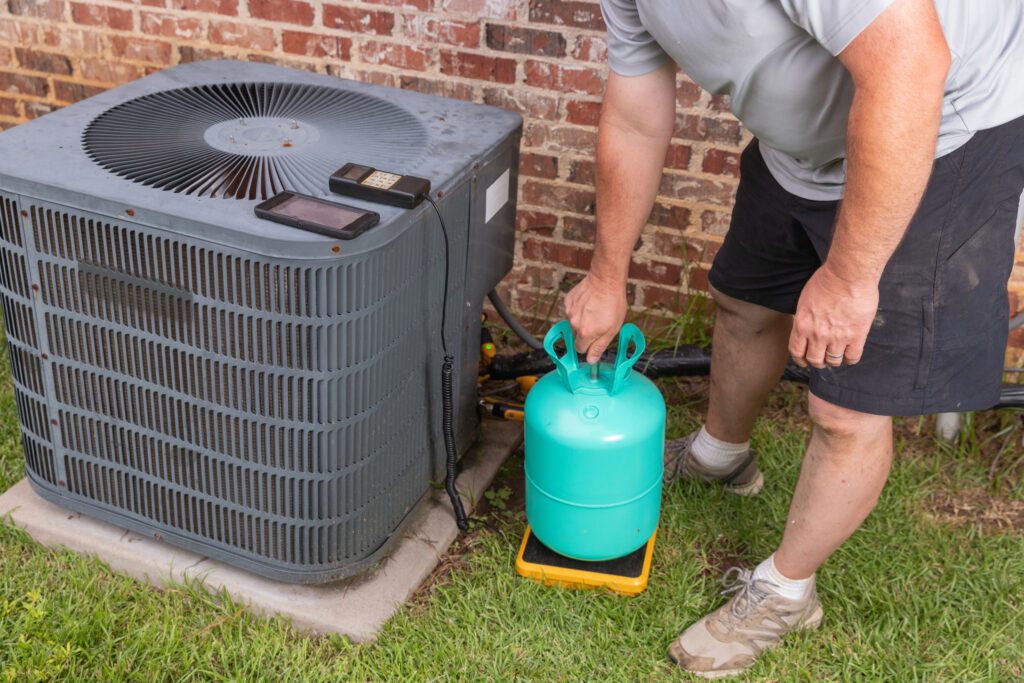With the increasing global focus on climate change and sustainable practices, many industries across the world are re-evaluating their methods to meet tighter environmental guidelines. With the HVAC industry in mind, the particular use of refrigerants has come under the spotlight. A major topic of discussion is the future of R-410A refrigerant. So, let’s dive into the R-410A phase-out and what local homeowners should expect.

The Importance of Refrigerants in HVAC Systems
Refrigerants are vital chemical compounds used in air conditioning and heating systems. They facilitate the cooling and heating process through heat absorption and release. Over the decades, there has been a steady evolution in the types of refrigerants used, each new version aiming to enhance efficiency while minimizing environmental impact.
R-410A, a type of hydrofluorocarbon (HFC), emerged as an eco-friendlier option compared to older formulations like chlorofluorocarbons (CFCs) and hydrochlorofluorocarbons (HCFCs) that damaged the ozone layer. Despite its zero ozone depletion potential, R-410A has a high global warming potential (GWP), prompting regulatory bodies to consider phasing it out.
Driving the Shift to Sustainable Alternatives
The move towards replacing R-410A and similar HFCs is largely driven by international accords and regulations aimed at cutting greenhouse gas emissions. The Kigali Amendment to the Montreal Protocol, established in 2016, plays a pivotal role in this effort. It outlines a structured timeline to decrease and eventually eliminate high-GWP HFCs. Developed nations, including the United States and various European countries, are tasked with reducing their usage to 15%-25% of baseline levels by the 2030s.
Timeline for Phasing Out R-410A
The eventual phase-out of R-410A is certain, but the exact timing is pivotal. Although there’s no absolute ban set for 2025, several initiatives are already underway to curb its usage:
- Regulatory Actions: Countries are implementing stricter controls on R-410A production and importation. For instance, the European Union has set guidelines under the F-Gas Regulation, and the U.S. Environmental Protection Agency (EPA) has initiated phasedown measures.
- Industry Innovations: The HVAC industry is rapidly adapting to these regulations by exploring refrigerants with lower GWP values. Alternatives like R-32, R-454B, and R-466A are being examined as feasible options for new systems.
- Market Evolution: As regulations evolve, manufacturers are shifting towards these newer refrigerants. This transition encourages a market transformation, prioritizing the production and retrofitting of systems compatible with lower-GWP refrigerants.
Exploring Alternatives to R-410A
- R-32: Offering half the GWP of R-410A and superior energy efficiency, R-32 stands out as a viable alternative. It’s already being incorporated into new systems, particularly in areas with proactive climate strategies.
- R-454B: Hailed as a balanced option, R-454B features an even lower GWP and functions similarly to R-410A, making the transition easier for manufacturers and users.
- R-466A (Solstice N41): Known for its safety and efficiency, R-466A is another strong contender. Its non-flammable nature offers added safety benefits compared to other alternatives.
Impact of Phasing Out R-410A
- For Manufacturers – Manufacturers are at the forefront of this transition, tasked with creating and optimizing systems that utilize eco-friendly refrigerants. This requires substantial investment in research, development, and production line modifications to embrace newer technologies.
- For Consumers – Consumers may encounter both immediate and long-term effects from the phase-out. Initially, there might be higher costs for systems and services as the industry adapts to innovative technologies. However, in the long term, these advancements are likely to result in enhanced efficiency and decreased energy expenses, leading to savings on energy bills.
- For the Environment – Moving away from high-GWP refrigerants like R-410A is expected to positively impact the environment. By adopting solutions with reduced ecological footprints, the HVAC industry is contributing to the global initiative to mitigate climate change, aligning with broad goals of lowering greenhouse gas emissions.

As the HVAC industry continues to progress in response to ecological challenges, the replacement of R-410A marks a crucial shift towards sustainable practices. While 2025 may not be the official cut-off, ongoing efforts by Delaware Heating & Air and others indicate a path towards more environmentally responsible solutions.
But don’t forget; we are here for you! So, if you have any more questions about your HVAC system’s refrigerant or suspect your own system is due for a refrigerant refill, also known as a “recharge,” please don’t hesitate to contact us.
We’ll get you squared away! Call Delaware Heating & Air today at (740) 227-8302, or schedule a heating or cooling repair appointment online now by clicking here!
More HVAC Refrigerant Information
Our goal is always to keep you informed as best as we can. Learn more about the role of HVAC refrigerants and their role here!







